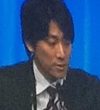This study included 201 patients suffering ST-segment elevation acute coronary syndrome and randomized to the use of optical coherence tomography (OCT) versus conventional angiography for the procedure. OCT-guided group used more stents per patient (1.4 versus 1.2, p = 0.03) and greater release pressure. During control OCT suboptimal results were found in a third of...
NOBORI II: Final 5-year results of drug-eluting stent with bio-absorbable polymer
This study evaluated the performance of Nobori biolimus bio-absorbable polymer stent in real-world patients. A total of 3067 consecutive patients followed up to 5 years were included. The rate of target lesion (composite of cardiac death, myocardial infarction and target lesion revascularization) was 3.9% at one year and 5.1% at 2 years. Long-term clinical performance...
COMPARE II: biolimus eluting stent with biodegradable polymer versus everolimus at 3 years.
This study randomized 2:1 – 2707 patients to biolimus eluting stent with biodegradable polymer versus everolimus eluting stent with permanent polymer. At one year, the results were similar demonstrating the biolimus eluting stent noninferiority. At three years cardiac death, myocardial infarction and target vessel revascularization rates remained similar with 11% for biolimus eluting stent and...
PARIS register: Non-adherence impact to antiplatelet therapy among men and women
The PARIS registry was a prospective observational study in 5018 patients undergoing coronary angioplasty with stent implantation in 15 centers. Three categories were prespecified in the discontinuation of dual antiplatelet therapy: 1) discontinuation for medical guidance, 2) transient discontinuation for less than 15 days for surgery and 3) permanent abandonment of it by non-adherence or...
Meta-analysis confirms the reduction in ischemic events with 2nd generation DES versus BMS
This paper included 5 studies that randomized patients to conventional stent versus chromium cobalt everolimus eluting stent; at 2 years, a significantly lower risk of cardiac death (2.7% for the everolimus eluting stent versus 4% for conventional stent, p = 0013) was observed. Myocardial infarction was reduced by over 80% with drug-eluting stent (0.08% versus...
APPOSITION IV: self-expanding DES in acute coronary syndrome
This study was designed to compare the apposition and neointimal coverage of struts by optical coherence tomography (OCT) of the new self-expanding sirolimus eluting stent (STENTYS SES) at 4 and 9 months in patients with STE-ACS. 152 patients randomized to STENTYS SES (n = 90) versus zotarolimus-eluting balloon-expandable stent (n = 62) were included. The...
TRYTON: dedicated stent for bifurcations not inferior than the provisional technic
This study compared the clinical and angiographic results of the use of the provisional stent technique versus the 2 stents technique (TRYTON device at the side branch) in true bifurcations. The study with non-inferiority design, randomized 704 patients in total to drug-eluting stent in the main branch plus the TRYTON device in the side branch...
GIPS -III: Metformin does not improve ejection fraction in non-diabetic patients undergoing primary angioplasty
There are experimental studies suggesting that metformin admin before and during ischemia and reperfusion could help to preserve left ventricular function regardless of glycometabolic state.In observational studies, the concomitant use of metformin is associated with a lower peak CK MB and troponin.380 nondiabetic patients undergoing primary angioplasty for acute coronary syndrome study with ST segment...
NEXT Trial: Biodegradable polymer stent (Nobori) was similar to the permanent polymer stents (Xience / Promus) at 2 years.
This multicenter work from Japanrandomized 3200 patients to receive biodegradable polymer biolimus eluting stent(Nobori) or everolimus-eluting stent with permanent polymer (Xience / Promus). The primary end point for efficacy was any revascularizationlesion. A two year follow up the Nobori stent was non-inferior to death or myocardial infarction (7.83% versus 7.69%) and TLR (6.23% versus 5.95%). ...
HEAT PPCI: Bivalirudin raises major cardiac events and does not reduce bleeding. The most controversial and criticized study at the ACC 14.
This randomized trial of a single center with consent obtained after randomization compared the use of bivalirudin versus heparin with the use of glycoprotein inhibitors arescue only in patients having ST segment elevation myocardial infarction.The primary efficacy endpoint was a composite of death, stroke, and myocardial revascularization of the target lesion and the primary safety...








